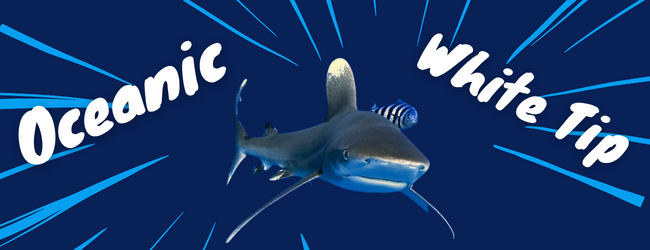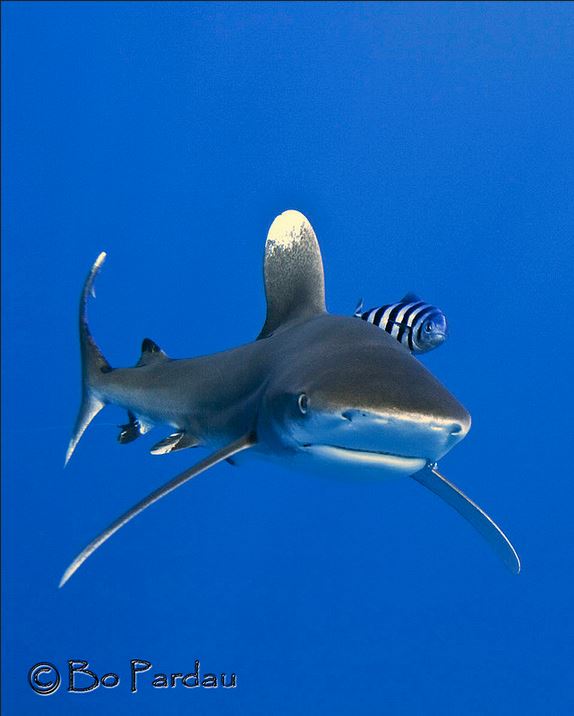Oceanic Whitetip: The Bad Reputation
Andy Woerner Sep 23, 2024
The oceanic whitetip is a species of shark that's often called the "ultimate predator." It is mostly a very slow-moving shark, but when it is attracted to something that appears to be food, its movements become more enthusiastic and it approaches cautiously but stubbornly. It will retreat and maintain a safe distance if driven off, but always ready to rush in if the opportunity presents itself.
Found throughout the world.
The species is widely distributed throughout the world's tropical seas, usually inhabiting the upper 300 m of open oceans, but evidence in the form of sucker scars on the skin of an individual filmed off Hawaii indicate that the species may also dive deep enough to battle with giant squid. Oceanic whitetip sharks are estimated to live up to 25 years, although it is thought that individuals may live to be much older (up to 36 years). The largest have been recorded up to 4 meters (13 feet) in length.
Mating season is in early summer in the northwest Atlantic Ocean and southwest Indian Ocean, although females captured in the Pacific have been found with embryos year-round, suggesting a longer mating season here.
Oceanic whitetips hunt and scavenge.
Whilst they are mostly solitary, Oceanic Whitetips do occasionally hunt in groups if the prey is right.
They typically feed on oceanic bony fishes and cephalopods. However, they also eat stingrays, sea turtles, birds, and crustaceans. They feed by biting into schools of fish or by swimming through schools with their mouth open. Oceanic Whitetip sharks are also known scavengers. If it is dead and floats, they will find it.
As opportunistic feeders they have gotten a bad rap in history.
Because oceanic whitetip sharks are opportunistic feeders, they have attacked humans on occasion, especially when a shipwreck lands people in the open ocean where these sharks like to roam. During both World Wars, the oceanic whitetip shark was a major concern for torpedoed boats and downed planes.
One of the most famous stories of one of these encounters was that of the U.S.S. Indianapolis.
On the night of July 30, 1945, and the Indianapolis was sailing from Tinian Island to the Philippines after completing a secret mission delivering uranium for the Hiroshima atomic bomb, which was dropped just one week later.
As the warship made its way through the Pacific, the Japanese submarine I-58 fired six torpedoes at the vessel at 12.14am.
Two hit it directly - and in an instant the blasts claimed the lives of around a quarter of the crew as 300 went down with the burning ship.
The sinking left almost 900 bobbing and helpless in pitch-dark waters. It is thought at least 150 died through shark attacks. Learn More about the U.S.S. Indianapolis.
Oceanic whitetips used to be among the three most abundant shark species, but now their populations are dwindling. Decreasing numbers spell trouble for the entire ocean ecosystem—removing a top predator like them can have serious ripple effects on their prey and other ocean creatures in the food web.
Whitetips are incredibly inquisitive. Unfortunately, this means they are easy to catch. Combined with their low reproductive rate, they are incredibly at risk from population depletion. Previously listed as vulnerable, the Oceanic Whitetip was reclassified to critically endangered in 2019.



